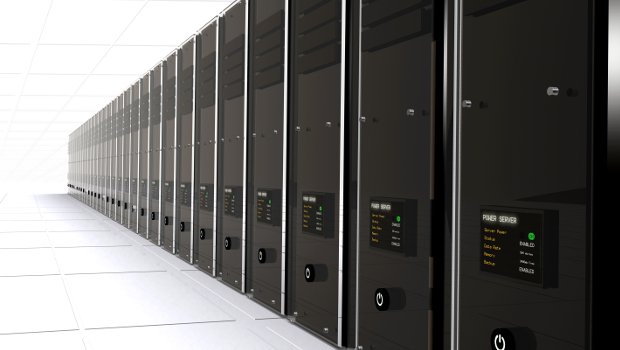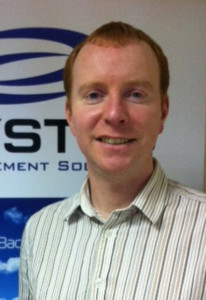
Server industry at critical juncture
Longform
(Image: Stockfresh)
| Persistent server demand |
| “Customers are less attached to the server vendors and are more willing to adopt commodity hardware/servers” |
 Asystec: Victor Forde Asystec: Victor Forde |
| As a data management company, we at Asystec are witnessing first-hand the trend towards converged infrastructure and private/public cloud adoption.The advent of virtualisation in reality lessened the reliance on branded server hardware that existed when talking about physical server workloads. We are focused on the applications and workloads and the server layer is just a vehicle for providing CPU, memory and network connectivity. We find that our customers are less attached to the server vendors and are more willing to adopt commodity hardware/servers.The demand for servers has not dissipated as a result converged systems and cloud offerings for a number of reasons. The advent of virtualisation brought with it the ease of creation of virtual machines/virtual servers (VM) in software often leading to VM sprawl meaning higher numbers of physical servers being procured to manage the ever growing virtual workloads. There are ways to combat that this. It involves ensuring our customers have a VM Lifecycle Management (VMLM) policy in place and often Asystec works with our customers to automate these VMLM policies in software and in particular using VMware’s vRealize Suite.
While the benefits of converging the VM (compute) workloads on the physical server are well known and common place, data centre (DC) architectures to which the industry has moved that converge the network and storage layers at this physical compute layer have meant server demand is very much on the rise. This is being done in software, lending itself to the term Software Defined Data Centre (SDDC). VMware’s NSX solution looks to address the Software Defined Networking area with EMC ScaleIO software only solution addressing the software defined storage layer. These additional workloads on the physical servers is driving the growth of memory and CPU core speeds as well as CPU core density. This (hyper) converged server layer with massive memory and CPU power with a scale out model is being positioned to have less latency issues or higher performance benefits than traversing the storage and Ethernet networks to a central storage array(s). The total cost of ownership model needs to be calculated as not all workloads are equal and with that not all workloads will suit a particular architecture, whether it be a scale up or scale out design.
While this abstraction of the DC into software has meant the hardware platform has been viewed in some corners as commodity an engineered platform/solution over a build your own will reduce risk, cost and complexity. As the topic in particular is server related, Asystec have seen significant customer benefits which the likes of such as Cisco Unified Computing System (UCS) servers can bring to a solution. UCS abstracts the entire identity of a physical server into a profile that can be migrated across hardware, in effect virtualising the entire server element of a private cloud. Asystec are specialists (EMC Gold Partner and VCE Gold Partner) in deploying converged infrastructure such as VCE Vblock & VSPEX and the advantages UCS brings to these engineered solutions are a huge selling point for our clients.
We are seeing greater consolidation ratios in virtualised environments and cloud deployments but this doesn’t mean less servers are required. The server market is vibrant and healthy but care must be taken in the Solution design and Operational management as the server count in a solution will be impacted as a result.
|
| Converged growth |
| “Compared to traditional infrastructure, converged infrastructure reduces complexity, pools resources and helps in automating IT processes” |
 Trilogy Technologies: Siobhan Cusack, sales manager, Ireland Trilogy Technologies: Siobhan Cusack, sales manager, Ireland |
| We have experienced steady growth in the deployment of converged systems that integrate server, storage, networking and I/O virtualisation over the past few years and businesses are experiencing significant advantages and savings that this brings to their organisations. Compared to traditional infrastructure, converged infrastructure reduces complexity, pools resources and helps in automating IT processes. These same organisations are consolidating their IT infrastructure and automating the management of their virtualised servers to gain the flexibility and resiliency that today’s businesses need to stay competitive. Private clouds have become the preferred choice for business making converged infrastructure solutions ideal due to the low capital cost and scalability of these systems.Trilogy designs, implements and manages agile infrastructure helping clients to enhance their operations, mitigate risk and enable business strategy. The company incorporates expertise in both infrastructure transformation and Managed IT as a Service to deliver business-wide IT services. |
| Hybrid model |
| “Albeit the number of services being supported per server has increased significantly with the uptake of virtualisation, the method of segregating these services as VMs has meant they are more scalable, compliant and resilient” |
 Ergo: Gavin Lockhart, senior consultant engineer Ergo: Gavin Lockhart, senior consultant engineer |
In Ireland over the last two to three years we have seen a noticeable upturn in demand for servers and converged infrastructure. Many companies invested frugally in their IT infrastructure during the economic downturn. Post-recession is seeing a trend to upgrade existing on premise infrastructure or migrate existing workloads into either public or private clouds. Whether customers decide to invest in a CapEx model (on premise) or an OpEx model (hosted cloud), more converged infrastructure and compute power (servers) need to be procured to support these environments. For on premise solutions the customer will procure the servers and for the hosted cloud environments the service provider will procure the hardware. Both options are similar in that they require physical servers to service the demand of the workloads.Although the drive for consolidation by utilising technologies such as converged infrastructure and virtualisation may negatively impact the demand for on premise server hardware, the economies of scale of the public cloud has mitigated against this with hosting companies such as Microsoft Azure, Amazon AWS, VMware Air and Sales Force to requiring vast quantities of hardware to support their clients.In Ergo, we are seeing a preference for a hybrid model, whereby our customers are migrating certain workloads into the cloud such as Sharepoint, Exchange and Lotus Notes into Office 365 whilst maintaining an on premise infrastructure for other less suitable workloads. The preference for the on premise scenario is to segregate workloads on different virtual machines as much as possible, whereas prior to the development of virtualisation a number of services may have been shared on the same physical server to help reduce the number of servers required and the expense associated. Albeit the number of services being supported per server has increased significantly with the uptake of virtualisation the method of segregating these services as VMs has meant they are more scalable, compliant and resilient
In short, with a lack of investment in IT during the recession and now with the aggressive emergence of public cloud services it is no wonder that the industry is currently enjoying an uplift in server demand.
|
Read More: enterprise hardware Infrastructure Inside Track JJ Worrall longform servers
Subscribers 0
Fans 0
Followers 0
Followers